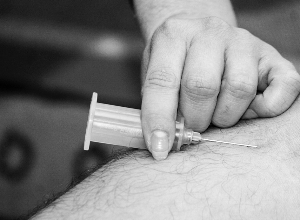Vaccines: Unravelling the true from the false
Published 29 Mar 2019 • By Louise Bollecker
Getting vaccinated and having your children vaccinated provides individual and collective protection against the resurgence of epidemics that we would consider as having had disappeared. Read our article and comment with your opinion!

What is a vaccine?
According to the WHO definition, "A vaccine is a biological preparation that improves immunity to a particular disease. A vaccine typically contains an agent that resembles a disease-causing microorganism, and is often made from weakened or killed forms of the microbe, its toxins or one of its surface proteins. The agent stimulates the body's immune system to recognize the agent as foreign, destroy it, and "remember" it, so that the immune system can more easily recognize and destroy any of these microorganisms that it later encounters."
Antibodies allow the body to defend itself against infections. At the first encounter with the pathogen, specific antibodies are produced. In the event of a second contact with the same pathogen, they will allow the body to defend itself more quickly and thus prevent the individual from falling ill.
Why get vaccinated?
We are talking about individual protection and collective protection through vaccines. Vaccines protect us against diseases that can have serious consequences or even cause death. For some of these diseases, there are no treatments to treat them.
But by getting vaccinated, you also avoid transmitting these contagious diseases. This protects people who are not vaccinated. Some people are too sensitive to be vaccinated, such as infants, pregnant women or the elderly.
When vaccination coverage is high, there is a decrease in the incidence of the disease, which can eventually lead to the eradication of the disease, as was the case with smallpox. It was declared eradicated by WHO in 1980 through a global vaccination campaign.
Why continue to get vaccinated against diseases that have almost disappeared?
Tetanus, polio or diphtheria are rare diseases today in developed countries but there is still a low risk of contracting them. In addition, this risk is higher in other countries. Given the frequency and speed of travel today, it is important to continue to get vaccinated to maintain this protection. The virtual disappearance of many diseases is linked to vaccination, but if we stop vaccinating today, they will reappear, as we can see now with measles.
The example of measles
Decreasing from 2012 to 2016, the disease has increased since late 2017, thanks to a decrease in vaccination coverage. The first measles death for 2019 was announced in early March in an immunocompromised and non-vaccinated person in France.
In Europe, the most affected country is Ukraine. In 2018, nearly 54,000 cases of measles, including 16 fatalities, were reported. The Ukrainian authorities attribute the current crisis to vaccine shortages in previous years and strong opposition to vaccination among part of the population.
In 2001: WHO launched a measles initiative. The plan had two objectives:
in 2015: reduce measles deaths by at least 95% from 2000 levels
in 2020: eliminate measles from at least five WHO regions
These objectives will not be achieved at this time.
Mistrust of vaccines, fake news?
Mistrust of vaccines has increased in recent years, partly because of the spread of false information. Major social networks are accused of letting the anti-vaccine, or "anti-vax", movement develop.
Facebook, Youtube and Pinterest have therefore decided to actively fight the spread of messages about vaccines on their platforms. In addition to reducing the reach of groups and pages that spread false information about vaccines, Facebook is thinking about how to share educational information about vaccines widely when people come across false information on the subject.
Combating widespread infections through vaccination: the example of Papillomavirus
When infected with Human Papillomavirus (HPV), the consequences of infection vary depending on the type of HPV involved. This can range from genital warts to cancer: HPV is responsible for 70% of cervical cancer cases. These viruses are highly contagious. It is estimated that 80% of sexually active men and women come into contact with a HPV once or several times in their lives.
The best protection against HPV is vaccination before infection. However, it does not protect against all types of papillomavirus. Screening smears are therefore still necessary for all women between the ages of 25 and 65. In France, the vaccine currently concerns girls aged 11 to 14, catch-up is possible up to 19 years, men having homosexual relations up to 26 years, and immunocompromised patients.
Vaccination policy varies across European countries and this has an impact on vaccination coverage rates. Thus, in countries that vaccinate early and in an organized way at school, such as the United Kingdom, Italy and Spain, coverage rates are above 70%. In countries that leave the vaccination initiative to their citizens, such as France, Germany and the United States, rates are below 42%.
In order to increase vaccination coverage, some countries have adopted a universal vaccination strategy such as Germany or the United Kingdom. Other countries such as France are considering this.
The search for new vaccines is always active: the example of influenza
Currently, the composition of the influenza vaccine is decided twice a year, in February for the Northern Hemisphere and in September for the Southern Hemisphere. WHO then decides on the viruses that will circulate the following winter to determine the composition of the vaccine several months in advance. Influenza viruses are constantly evolving. Those that circulate in a given year are not necessarily those that will circulate in the next year, hence the need to modify the vaccine every year.
The delay of several months between the recommendations and the beginning of the next influenza season is due to the manufacturing processes of pharmaceutical companies: in the case of influenza vaccine, viruses are cultured in chicken eggs.
To determine the composition of the vaccine, WHO analyses data from its national influenza centres in about 100 countries that monitor the circulation of viruses during the current season. The more the viruses chosen to compose the vaccines correspond to those that will circulate next winter, the more effective the vaccination will be. However, it is impossible to predict with certainty which ones will be circulating in eight months' time.
Tomorrow, a universal flu vaccine?
Influenza viruses remain difficult to fight because they adapt very quickly and thus succeed in thwarting immune defences.
The medical community has long dreamed of an absolute weapon that could be effective regardless of influenza virus strains. Australian researchers may have the solution. They claim to have identified immune cells that could eventually lead to the development of a universal vaccine. These "killer" immune cells found in half of the world's population are believed to be effective against all types of influenza viruses.
So, are you for or against vaccines?
Give us your opinion!
Carenity

 Facebook
Facebook Twitter
Twitter






